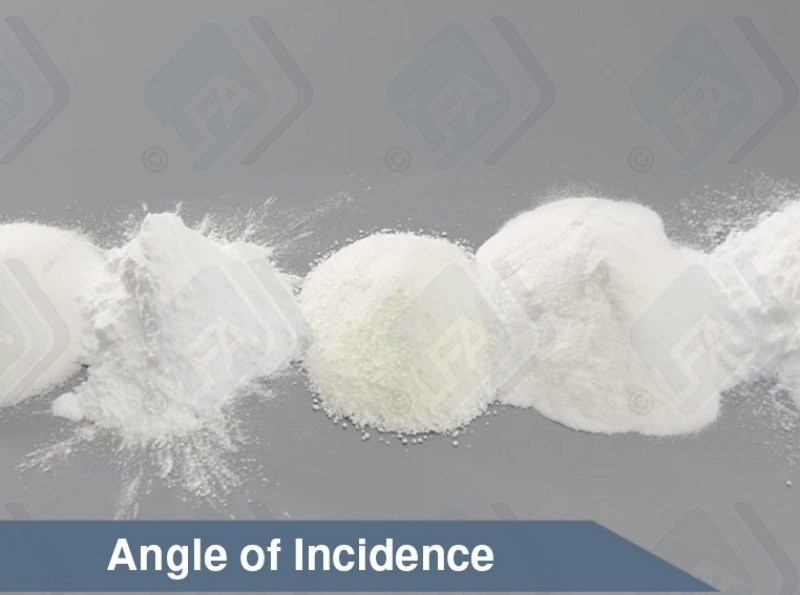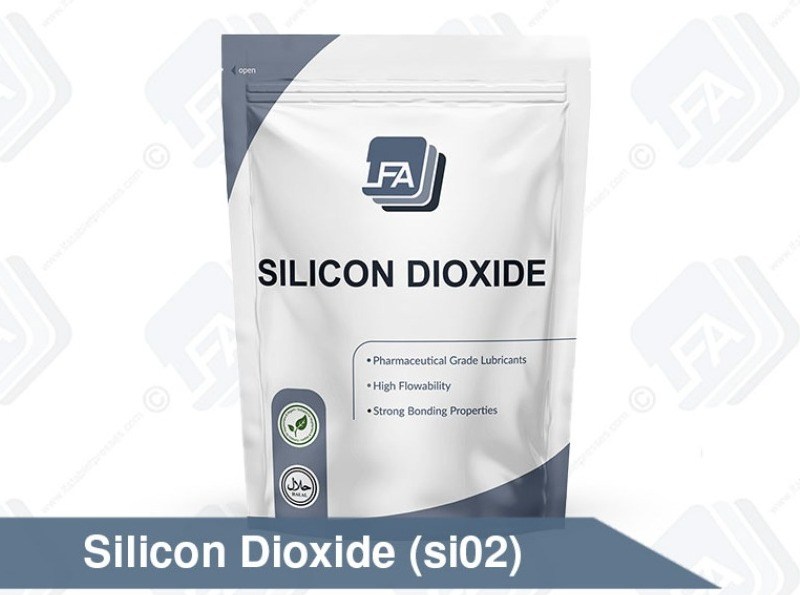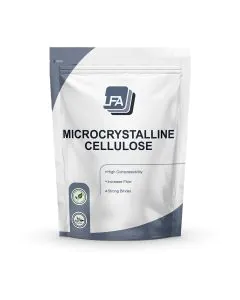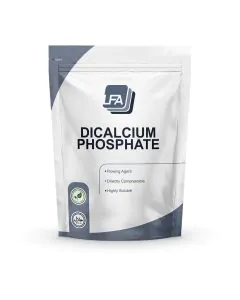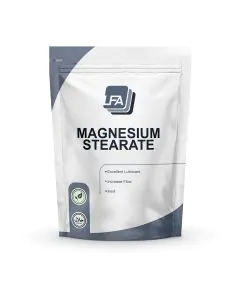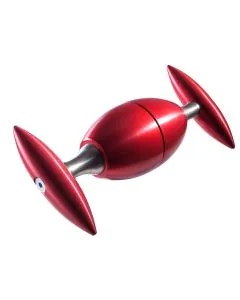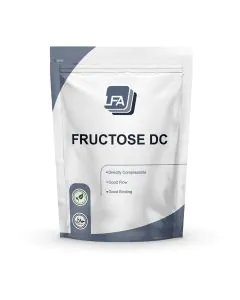El óxido de silicio (IV), también conocido como sílice, es un excipiente. Es multifuncional, y facilita el proceso de fabricación. El óxido de silicio (IV) es un ingrediente inerte. Esto quiere decir que no reacciona con otros ingredientes que esté usando en su mezcla, o con sustancias en el cuerpo. Facilita tanto la fabricación como la digestión. Tiene un alto punto de fusión y un punto de ebullición aún más alto. No es soluble en agua. Existe en grado natural y sintético, pero ambos tienen la misma composición química. Es de uso frecuente, ya que aumenta la fluidez y evita el apelmazamiento en la maquinaria.
El óxido de silicio (IV) absorbe la humedad de su entorno. Los fabricantes de cosmética y alimentación lo usan a menudo por ello. Estas aplicaciones son también útiles para las empresas farmacéuticas. Sus distintas ventajas ofrecen un proceso de elaboración más fácil y estable.
El óxido de silicio (IV) o dióxido de silicio tiene una alta porosidad, y absorbe hasta 300g de líquido por cada 100g de sílice. Esto significa que convierte los ingredientes líquidos en polvos que fluyen con facilidad. Actúa también como glidante, sustancia utilizada para mejorar las calidades de flujo de las fórmulas. Garantiza que el producto fluye libremente a través de la maquinaria, sin pegarse a la misma. El sílice aumenta también la estabilidad de API sensibles a la humedad. API son las siglas en inglés de "principio activo farmacéutico". Por ello, el dióxido de silicio reduce las trazas de humedad que pueden degradar la máquina. Tiene una capacidad de absorción de humedad única. Así, ayuda también a una rápida compresión, gracias a su resistencia al astillamiento y pegado.
El óxido de silicio (IV) es un elemento interesante, muy abundante en la Tierra. Está por todos lados, constituye el 60% de la corteza terrestre y se halla en el 93% de las rocas conocidas. También se conoce como cuarzo. Se encuentra en nuestros tejidos corporales, en las plantas y en la comida. Es necesario para unos huesos, piel, pelo, dientes y uñas sanos. La deficiencia de dióxido de silicio puede causar malformación en los huesos y enfermedades en la piel y los dientes.
Es importante manejar correctamente el óxido de silicio (IV). Un uso correcto aumenta la vida útil del producto y garantiza la seguridad de las personas. Este producto puede irritar la piel y los ojos. Evite su inhalación, y lleve mascarilla protectora cuando lo maneje. Si el producto se almacena correctamente, permanecerá en excelentes condiciones hasta su uso.
El dióxido de silicio es un excipiente multifuncional y muy popular. Es eficaz, y aumenta la eficiencia del proceso de elaboración.
Escribir Su propia reseña
Are all excipients safe for all ages to consume?
Yes, it does not matter what age, size or sex the person consuming the products is. It is, however, important to check the intolerance data.
Are all the excipients safe for human consumption?
Yes, all of the excipients are safe for human or animal consumption. There are some precautions that should be taken when handling them and there are some people that might have intolerances to some of them. Information on this can be found in the products MSDS and Intolerance Data Sheet. This can be found in this section for every excipient.
Are there any known allergens or health risks?
Can I get a better price for excipients than is listed on the website?
Yes, we have bulk pricing for all of our excipients, and these can be found in this section. We offer bulk in 500 kg, 1 ton, 2 ton and 5 ton lots. The prices are set on these quantities as these are the amounts that will fit on pallets.
Can I have a CoA for my Excipient?
Yes. CoA stands for Certificate of Analysis this is also known some times as an MSDS (Material Safety Data Sheet) all of the information contained in a CoA is inside the MSDS for every LFA product which is emailed to you after purchase.
Dissolving rate? Any known factors that can affect the rate, speed up or slow down the breakdown of a tablet?
Yes. There are two things at play here. You can get hygroscopic and hydrophobic excipients. Hygroscopic means that they take on water quickly, while hydrophobic means that they repel water.
There are products know as supper disintegrants. These products help the breakdown of tablets. At the moment LFA does not sell any supper disintegrants.
Magnesium stearate is hydrophobic this means that it will slow the breakdown of a tablet.
However, it is used in such small amounts that most of the time it will not make a difference to our customer's products. If they would like to be sure then they should conduct what is known as a disintegration test.
How long is the storage period of each excipient? What is the shelf life?
Firmapress - 2 years form batch date.
Dextrose - 3 years from batch date.
Dicalcium Phosphate - 3 years from batch date.
Microcrystalline Cellulose -
Magnesium stearate -
Lactose - 2 years from batch date.
Silica Dioxide - 2 years from batch date.
How should I clean contact parts that have come into contact with my excipients or active ingredients?
here are 6 steps that should be followed as a general rule of thumb when cleaning contact surfaces that have come into contact with powders:
Dry Clean - First you need to remove as much of the dry powder as possible. You can do this using a hover/vacuum. Make sure that the vacuum you are using has a filter good enough to handle fine dust.
Wet Clean - Next you need to perform a wet clean. This can be done with warm water and soap or if available an ultrasonic cleaner.
Rinse - Next you need to rinse off any soap with potable water (drinking water). You do not have to do this if you used an ultrasonic cleaner in the last step. It is important to ensure that all parts are thoroughly dried immediately after washing to avoid any rusting.
Sanitise - Next you need to sanitise the surface. This step is recommended by the FDA. There are a number of sanitising solutions available designed to be applied and left on.
Lubricate - You now need to lubricate any parts that require it. This should be with the appropriate grade oil or grease considering your use and greasing chart. Store - Finally store any of the parts in a cool dry place. If you are storing them on the machine then make sure the machine is in a temperature controlled environment with low humidity.
What is the mesh size of your excipients? etc.
Dextrose - approx 100 mesh
Dicalcium Phosphate - approx 100 mesh
Microcrystoline Cellulose - approx 120-200
Magnesium sterate -
Lactose - 80 mesh
Silica Dioxide -
Firmapress - 100-200 mesh
What kind of agent is each excipient?/ What is the main use of each excipient?
Dextrose - Sweetener, binding agent, good for chewable tablets or candy.
Microcrystalline Cellulose - Binder, filling agent. Good at binding tablets and making them bigger. It can also be used as a filler for capsules.
Magnesium stearate - Dry Lubricant. This stops products from getting stuck to the tooling. It can also help with powder flow issues and caking issues.
Lactose - Binder, sweetener and bulking agent. It has a large mesh so it flows well but most people do not like it because of the intolerance issues.
Silica Dioxide - Flowing agent. This assist powders in flowing smoothly through the machines. It also helps with cacking issues where powders get stuck to the machine.
What kind of condition should excipients be stored in?
Firmapress - 2 years form batch date.
Dextrose - 3 years from batch date.
Dicalcium Phosphate - 3 years from batch date.
Microcrystalline Cellulose -
Magnesium stearate -
Lactose - 2 years from batch date.
Silica Dioxide - 2 years from batch date.
Which excipient should I add if the product doesn't bind well?
If your product does not bind well then we would recommend using MCC. This can be used in any % the limiting factor is the size of the tablet.
If the amount of MCC you would have to use would be too much or if you do not want to use MCC then you have 3 other options: Ask your supplier for a directly compressible or tabletable grade of your product. Spray dry your product. Wet granulate your product.
Which excipient should I add if the product is sticky?
If your product is sticky then you will need to add a dry lubricant to your mix. For this, we recommend magnesium stearate.
We do not recommend that you add more than 1% to the mix as more than this can cause capping. If your product is still sticky at this point then we would recommend looking into granulation.
Which excipient should I add if the product/API is clumpy?
If your product or API is clumpy then you will need to add an anticaking agent. For this, we recommend silicon dioxide. We only recommend adding a maximum of 2% of this to the mix


